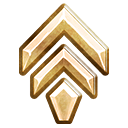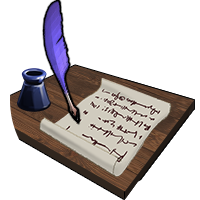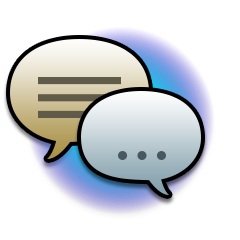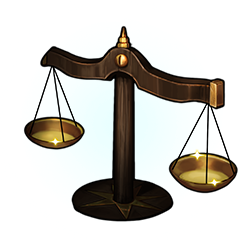Hello everyone, it’s Sitri!
As I continue my journey as the newest Community Intern, I’ve been meeting with various teams inside the studio at Warner Bros. Games Boston! I thought this would be a great opportunity to give players a closer look at the making of Game of Thrones: Conquest.
To that end, I’m very excited to introduce the first in a series of posts where I interview different departments of our studio!
I first spoke with a few of our User Experience (UX) Designers.

Have you ever wondered why the buttons in our game are arranged a certain way? Or how information is displayed in the game? Our UX Designers are responsible for so many things that may go unnoticed in your day-to-day experiences in Game of Thrones: Conquest.

Let’s start with some introductions…
- UX Manager, Cipher: She oversees all major UX-related initiatives and ensures the UX Design team is thinking about the player every step of the way, from designing to testing. Cipher joined the team at the beginning of 2020 but has been designing UX for various games and audiences for 14+ years.
- Associate UX Designer, Proxy: His role is focused on improving game quality and developer quality of life. Proxy’s been with our studio since 2014 as part of our QA team and moved into UX Design recently in 2020.
- Senior UX Designer, Vixey: Since joining our studio in January this year, her role is to design features for future Game of Thrones: Conquest content. Before her work here, she’s been doing both UX and UI Design professionally for over 6 years.
- Advanced UX Designer, Cofea: Her focus is on improving the studio’s internal tools so we can deliver better products to players. She joined the studio in 2008 as a Game Designer and transitioned to specialize in UX in 2015.
Now that you’ve been acquainted,
let’s start the Developer Q&A!

Q: How would you define your work in UX Design?
Proxy – A UX Designer’s job is to make sure that the Game Designer’s intent and what we’re displaying translates to what players are seeing. Our role is to ensure that there isn’t anything that we’re displaying that gets in the way of players’ understanding of what’s going on, pretty much at all times.
Cofea – We’re focused on the pre-production of a concept in the game and how the user experiences this concept. Whether it’s a quality-of-life improvement or a new feature we’re auditing for problems, we want the user to have a seamless experience and to understand what they should be doing and why.
Everything that a player interacts with, but doesn’t necessarily notice they’re experiencing, UX has probably designed it– or forgotten to design it if it’s bad. In our discipline, if we’ve done something well, you don’t know that we were ever there. If we’ve done it badly, you are cursing us.
Cipher – I oversee everything that’s user experience-based, which is all about how the players interact with the game from day in, day out. As the UX Manager here, I help bring clarity to some of our major goals, as well as help my team grow by giving them new challenges to really understand where players are coming from. Sometimes we’ll get survey information, or we’ll talk to the Community team, or we’ll get players to come in and actually watch them play the game. We’ll try to determine where they are getting stuck, where they have frustration, what kind of things they want to see more of, and we’ll try to make our designs around those elements.

Q: What’s a day in the life of a UX Designer for Game of Thrones: Conquest?
Vixey – We’re always doing an extensive amount of research and design on user flows, journey maps, wireframes, prototypes, iterations, and testing. We also work with software tools like the Adobe Suite, Envision, Sketch and Unity.
Proxy – We operate in cross-disciplinary pods for each particular feature that we’re working on. I touch base with my pod a couple of times during the week, and I’ll also sync up with my own discipline, which are the UX designers.
Cipher – Our team gets together every day to talk about what features or bugs we’re working on. For each item, a UX designer will come up with a gray box version of it, which is like a drawing, but it’s just simple boxes with buttons that show that this is going to go here, Point A is going to go to Point B, the player is going to press this button and it’s going to do a cool animation, etc.
We’re crafting some of those experiments, putting them in front of the team, and then determine whether or not that works or if something needs to be fixed. As a manager, I’ll go in and review that work and make sure everything is consistent with all the other experiences in the game. I also collaborate with Consumer Insights to make sure that we’re actually testing these things with real players and gathering feedback about their experiences.

Wireframes that show the general step-by-step flow of slotting a Hero into a Small Council seat. Seemingly simple user interactions often require very detailed multi-step flows to plan out the experience.
Q: What teams do you work with the most?
Vixey – While working on features, Game Designers and Project Managers come to us with ideas for new implementations or frictions with existing functionality. These features are almost always something players have been asking for.
Our Game Design team focuses on the functionality of a feature from the back-end perspective, and it’s the UX Designer’s job to transcribe that work and make it functional on the front end, a.k.a. from the users’ perspective.
We also work closely with the Consumer Insights team to get insightful usability tests and surveys to make sure that all of the decisions we make from a UX perspective are always user-based and user-informed. We take our learnings back to the Game Design team and discuss how players reacted to the functionality or feature and how we should be able to accommodate what our players actually need if what we’re producing isn’t quite hitting that mark. We’ll go back to reiteration, and we’ll just keep on doing that as we’re coming up with development processes.
Furthermore, we collaborate often with our UI Designers. UI stands for User Interfacing (or the elements on the screen you interact with) to ensure that our new UX blends seamlessly with our current existing interface. We obviously don’t want to design something that our players won’t be accustomed to using or would be so out of the scope for the design that we would have to go back to the drawing board.
Cofea – We’re usually the step between a designer having an idea and an engineer making the idea. We take the idea and turn it into a visualized thing with all of its components mapped out. Because we’re in pods, we’re collaborating with every discipline. We’re making sure that Community, for example, doesn’t have any red flags. As UX Designers, we can show people actual prototypes so that they can find the red flags associated with their disciplines. We’re relying on the expertise of everyone around us and taking in all that feedback. Everyone’s a stakeholder, including the player, and we make sure that what we deliver checks off all the boxes and everyone’s happy.

Q: What are some common
misconceptions about UX Design?
Cofea – I don’t really think in terms of misconceptions. In my mind, a player is never wrong in their experience. If my goal is to get players from point A to point C without stopping at point B, but 5 of the 10 players we interview stop at point B, that’s me failing as a designer. The player isn’t wrong, it just means I designed it badly, and anything they can tell us becomes helpful. I’m wrong often, I fail often, and I try to fail really quickly so that we can come to a better conclusion before we actually build it.
Proxy – UX is focused on making sure people don’t get hung up and confused about what the game is supposed to be and how to play, no matter who you are.
Having said that, the reason why designs are hard to do is because people are interacting with the game in however many ways that we allow them to, and so depending on what we’re working on, there will always be cases where something makes less sense if the players are in this state, or they engaged with it in this way, or they’re coming from this panel and so on.
There are so many different ways that players can be interacting with any given system (or systems) that you have to design for. My job is to make sure that I’m not missing any of these considerations. However, it might not be possible for my design to account for every case and still make sense.
Cipher – My UX work has to go through different people to reach the end goal of going into the game, and a lot can happen at each of those points. I know that some things may seem really easy, and some things are. Some things get prioritized while other things get moved. But at the end of the day, we do love hearing from the players on what they want and we try very hard to try to prioritize those things and get those changes in the game.

Example wireframes of the different states of a Hero when seen from the Upgrade menu. For planning state differences in any piece of UI (whether a full menu, a widget, or something even smaller), all states need to be considered and accounted for.
Q: What’s the difference between UX and
other design disciplines?
Cipher – We are all about the visual language, as well as the functionality of how you’re interacting with the game, whereas the Systems Design team for example cares about the math that’s going into the game. Let’s use the example of your troops fighting enemy troops. Systems Design is coming up with how troops interact with other troops in a theoretical space with math, whereas UX Design would visualize the stats for the troops and visually show you that this troop is better than that troop. The Systems Designer is actually setting up and making the stats, so they will then have to explain what the stat is to us so that we can visualize it for you.
Cofea – Usually we’re called “UI/UX” with a slash in the middle. While UX and UI are two different disciplines, people can be masters of both. UX is all about the flow of how the interface functions, while UI is more about the consistency of the interface’s visual language. For example, when you hover over a button, it might glow, and when you click it, it might have a little sparkle. The visual design elements are handled by UI, while UX focuses on perfecting the player’s experience interacting with those elements.

Finalized different states of the Hero Advancement process. These wireframes were turned into a prototype and more detailed documentation to share with the team, but this became the foundation of the UI that is seen in game today.
Q: How do you determine what
projects to tackle as opposed to others?
Cipher – There’s a bunch of people making that call. Usually, it comes down to what we feel will be the most impactful for the largest number of people. We’ll also look at how long it will take that team to make this new feature. We want to make sure that we’re delivering new, exciting content and improvements on a regular basis for our players so they can rely on us to build the best game experience we can for them.
Vixey – We also rank our priorities based on our players’ current frictions within our game, as well as data-driven assessments. Personally, I love getting live feedback from actual users. I highly advocate for usability tests and surveys throughout all points of design. I always want my designs to be data-driven and reinforced by real users in real-time by telling me what they like and don’t like about things that we’re trying to create for them. At the end of the day, players are going to let us know if there’s a problem or a hurdle that we need to solve to make sure that we can choose the best UX paths to achieve that design for them.
…. And now let’s learn some fun facts about the team!

Q: What’s your favorite troop type?
Cipher – I was Calvary for a little while, but my Allegiance needed me to be ranged, so I’m ranged now.
Proxy – These days with video games, I play more support than anything else. So in that regard, I’m down with siege. I feel like siege has a very niche use.
Cofea – I’m going to say ranged. You get to train them first, so they were the first troop type that I cared about. Also, the female troops are in that category, so I feel represented by that.
Vixey – I’d choose ranged, probably because it has some of my favorite art. It’s silly reasoning, but I’ve always been a fan of ranged types anyways.

Q: Who’s your favorite Game of Thrones character?
Cipher – I love Bran. I read all the books, and I’m a really big fan of wizards in general.
Proxy – My favorite was Ned Stark. And for the sake of spoilers, that’s all I’m going to say on the matter.
Cofea – It’s complicated, but the short answer is Arya.
Vixey – Definitely Daenerys. I love her character a lot. Tyrion Lannister would probably be a close second though, just because he’s so witty.

Q: If you were a stat, what would you be?
Cipher – I think that if I were a stat, I would call it “drink and I know things” because I’m often the person that people have to ask about things. Plus I think the name is funny.
Proxy – Hm, how about “dragon anxiety”? Whenever you march with a dragon, there’s a chance that your dragon doesn’t go. It’s silly and players would hate that if it was actually in the game since it’s more of a debuff, but it’s the first thing that popped into my head.
Cofea – I feel like reinforcement-related stats would be my thing. I like reinforcing the team and making sure that other people have the support they need to do their jobs so maybe a type of reinforcement capacity or something.
Vixey – Mine would probably be something in regards to defense or healing. I probably would be something like, “gives an additional 20 percent duration when activating a Peace Shield.” So if you’re activating your Peace Shield for 24 hours, it will give you an additional 4.8 hours.

We hope you enjoyed this look into User Experience Design!
Stay tuned over the coming months as we interview other disciplines and learn more about the process of developing Game of Thrones: Conquest. If you have any questions for our developers or suggestions for departments you’d like to see interviewed, give me a shout on Discord by tagging @Sitri!



